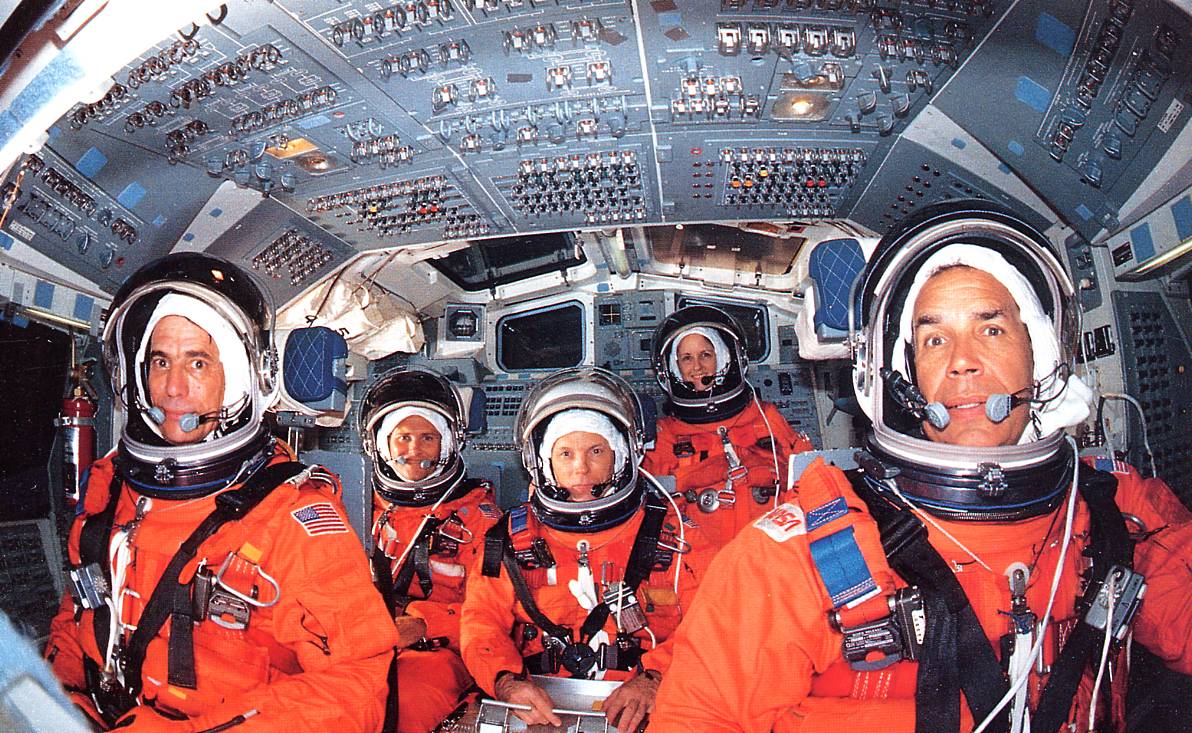The truth is, I've done some work on this topic already, which is where I got the current systems I have been using in my Ships of The Black Desert products. The way I see it, there are two necessary approached to any problem such as this for an author; the Plausible design considerations, which tell you what you can get away with without stretching credulity, and the Meta-Fiction considerations, which basically mean what does the plot that you've already got in mind just have to have in order to work? Now, being the author (of sorts) of Hard Science Fiction, I understand that the Plausible considerations must take precedence over the Meta-Fiction considerations. As an RPG Designer, I understand that there are certain conventions that must be followed in order to make a game playable. Hopefully, I can strike a happy medium between the two.
When deciding how to crew my rockets, way back last September when the Paladin first came out, I understood that as an RPG product the spacecraft had to have room for up to five people. This is the traditional baseline for PC parties in most game systems. I also understood that in order for people to actually get to play a game more than once a month, I needed to make the game playable for smaller groups and even solo players. In Hard SF this is not that
Problem one solved.
So, having decided that I need spacecraft to have a crew of 1-5 organics, It was time to start researching in the real world, so I would have a baseline from which to extrapolate. I first looked at how real space craft are currently crewed; The Space Shuttle, despite being 30 years old and on its last mission as a class of spacecraft, is the best place to start in the real world because it has the largest crew compliment; up to seven astronauts can be carried at a time. Even better, It can be crewed by as little as two, such as on STS-1. With a crew capacity within my Meta-Fictional filter, I could now look at what these people actually do.
The Space Shuttle has a core crew of three or four; Commander, Pilot, Mission Specialist and Payload Specialist. The Commander is the astronaut in charge (obviously) and also serves as the primary pilot. The Pilot is actually the Co-Pilot and also may deploy satellites and such. The Mission Specialist usually has specific duties related to whatever science is being performed on the Mission. The Payload Specialist, as well as being in charge of specific satellites as technical experts, may also be a military officer responsible for launching classified payloads into orbit under the title of USAF Manned Spaceflight Engineer.
Possible crew positions also include Educator Mission Specialist , Flight Engineer, International Mission Specialist and Spaceflight Participant. Details can be found here.
Now, most PCs in a game will not be conducting scientific experiments. For the Ships of the Black Desert, I used the above as inspiration to come up with the following crew positions:
- Flight Commander (FCOM): Not to be confused with "Flight" on IPVs carrying small spacecraft. This person is the Skipper, and maybe the Emergency Pilot as well. Use the Command Skill.
- Pilot: This is the primary pilot of the spacecraft, a job that involves incidental maneuvering, monitoring the flight computers, and guiding the spacecraft during ionization blackout. Use the Spacecraft Operation Skill.
- Flight Engineer (Booster/Chief/Drive): In charged of maintenance, electrical systems, propulsion, and the Fusion reactor, (Via robots) if any. Use the Engineering, Nuclear Engineering, Spacecraft Maintenance and/or the Telepresence Skills.
- Payload Officer (PLO): This person is in charge of all cargo, including proper weight distribution, and all weapons on a spacecraft, if any. Also operates robots often. Use the Gunnery and Telepresence Skills.
- Life-Support Officer (LSO): Even spacecraft fully operated by AI will have an LSO if they carry passengers, as a reassurance to their guests. In charge of maintaining all organic consumables, atmosphere, and associated systems, like the air-scrubbers and toilets. This is also the spacecraft's Medic. Use the Medicine and Spacecraft Maintenance Skills.
Incidently, anyone who thinks that the Mission Control model for a spacecraft crew isn't bad-ass enough for a work of fiction or a role-playing game is invited to watch the movie Apollo 13 as well as the videos from the FCRs at NASA during the Challenger and Colombia disasters.
This type of crew would be set up thusly: Three eight-hour Watches staffed by the Pilot, PLO and Chief in order. Neither the FCOM nor the LSO stand watches; the FCOM is too busy being in charge and the LSO is not qualified.
That's it for this post, RocketFans; return tomorrow for the final (maybe) installment of this series of articles, where we will discuss the staffing of a tactical command and control craft during space combat.
PS: Don't forget to comment on the Character Sheet!


It strikes me that such a small crew might not have watches - instead operating like the Shuttle, with 'day-time' when everyone is awake, and 'night-time' when everyone is asleep, with automatics/alarms watching for problems.
ReplyDeletePerhaps for combat operations you'd need a watch officer, unless you have no-stealth-in-space, or all combat-run-by-computer, in which case sleep with alarms could still work.
For a game it would allow me more normal party interactions.
...I agree. However, in orbital space, it can get very crowded, so I think a standing watch bill will be necessary. Also, the current Shuttle, when it is on orbit, is the only manned spacecraft in the sky. If there were more orbiters in LEO at a time - especially orbiters from rival/hostile governments, I think we would see a 24 hour watch.
ReplyDeleteIn the end, I think working in shifts and having all of the crew together will both be used.